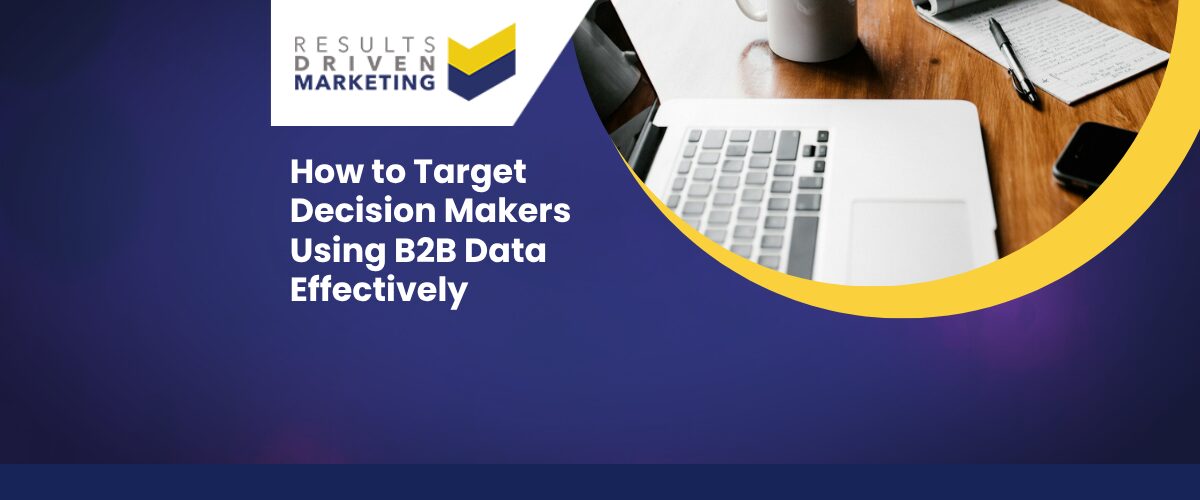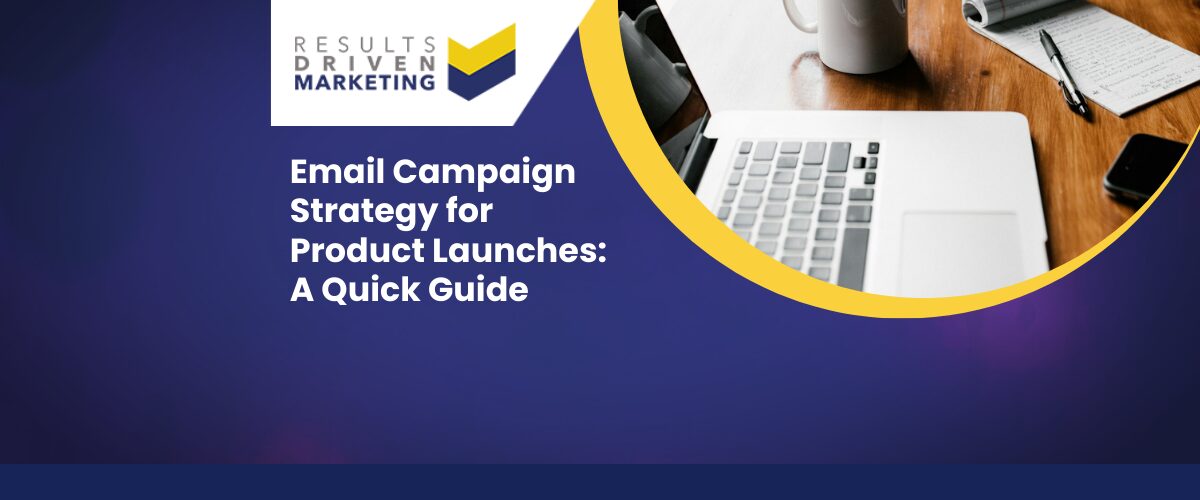
How to Target Decision Makers Using B2B Data Effectively
How to target decision makers using B2B data effectively is one of the biggest challenges for sales and marketing teams — especially for SMEs trying to maximise every conversation.
You’ve got a list of businesses. Great. But if you’re not speaking to the person with the authority to buy, you’re just burning time and budget. Too many campaigns fail because they target generic roles, outdated contacts, or the wrong department entirely.
Decision-makers aren’t just job titles — they’re specific people in specific roles with specific problems. And with the right B2B data, you can find them, reach them, and convert them far more efficiently.
In this guide, we’ll show you how to sharpen your targeting — from identifying who actually makes the decisions, to segmenting your data, and tailoring your outreach. The result? More meaningful conversations, stronger engagement, and more sales opportunities.
Table of contents:
Why Targeting Decision Makers Matters in B2B
In B2B sales, who you speak to is just as important as what you say.
Targeting decision makers matters because they’re the ones with the authority to say “yes,” sign off budgets, and move things forward. If your message only reaches gatekeepers, junior staff, or the wrong department, your chances of converting drop significantly.
For UK SMEs with limited time and budget, scattergun outreach just doesn’t cut it. Every call, email, or mailer needs to count — and that means starting with the right contact.
Here’s what happens when you target the wrong people:
-
Campaigns get ignored or passed on (and often never followed up)
-
Sales cycles get longer
-
Your messaging loses relevance
-
Your team wastes time on unqualified conversations
Targeting decision makers upfront ensures you’re speaking to the people who matter — and moving closer to a real opportunity with every touchpoint.
What Roles Count as “Decision Makers”?
Not all decision makers look the same — especially in SMEs. Understanding who actually holds buying power (or influences it) is key to targeting effectively.
Owner-Led Businesses
In smaller companies, the decision maker is often the business owner, managing director, or founder. These contacts usually wear multiple hats, so:
-
They care about cost, speed, and ROI
-
Personalised, direct messaging works best
-
They respond well to concise, solution-focused outreach
Role-Based Decision Makers
In larger SMEs, the decision-making power often sits with heads of departments or senior managers, such as:
-
Marketing Directors – for campaigns, branding, lead gen
-
Sales Managers – for CRM tools, prospecting lists
-
Operations Managers – for logistics, efficiency solutions
Who you target depends on what you’re offering. Match your message to their role.
Functional vs Budget Authority
Sometimes, the person who uses your solution isn’t the one who signs off on it. Know the difference between:
-
Influencers – those who research and recommend
-
Buyers – those who approve and pay
The best outreach speaks to both — and B2B data helps you find them.
How to Target Decision Makers Using B2B Data
To connect with the right people, you need more than just a list — you need a strategy. Here’s how to target decision makers using B2B data effectively:
Step 1 – Define Your Ideal Decision Maker
Start by building an Ideal Customer Profile (ICP). Think beyond job titles — consider:
-
Role (e.g. Sales Director, Business Owner)
-
Company size and sector
-
Location or region
-
Buying responsibilities or pain points
The more specific your profile, the easier it is to segment your list and craft the right message.
Step 2 – Segment Your Data Around This Profile
Use your B2B data to filter contacts who match your ICP:
-
Filter by job role, industry, turnover, location
-
Exclude roles or sectors that don’t buy from you
-
Prioritise decision-makers in your best-performing segments
Smaller, sharper lists often outperform larger, generic ones.
Step 3 – Personalise Your Outreach
Use job title and industry context to tailor your messaging:
-
Reference common pain points (e.g. lead gen for Marketing Directors)
-
Use subject lines or call openers that speak to their role
-
Keep it concise and outcome-focused
Relevant messages get read. Generic ones get ignored.
Step 4 – Use the Right Channel
Not every decision maker prefers the same approach:
-
Cold email works well for marketers, tech leads, and owners
-
Telemarketing helps build rapport with operations and sales leads
-
Direct mail can stand out for high-ticket offers or regional plays
Test what works best with your audience — and let data drive the follow-up.
Common Mistakes When Targeting Decision Makers
Even with a good list, it’s easy to miss the mark if your approach is off. Here are the most common mistakes SMEs make when trying to reach decision makers:
Using Vague Job Titles or No Segmentation
-
“Director” or “Manager” isn’t enough — without knowing their function, your message may not be relevant.
-
Lack of segmentation leads to scattergun outreach and poor results.
Sending the Same Message to Everyone
-
One-size-fits-all messaging doesn’t work across job roles or industries.
-
Decision makers want solutions tailored to their challenges — not generic pitches.
Not Cleaning or Enriching Data First
-
Outdated or incomplete data leads to bounces, wrong contacts, and missed opportunities.
-
Clean, enriched records mean fewer dead ends and better engagement.
Ignoring Compliance (e.g. GDPR, CTPS)
-
Failing to check CTPS status for calls or using poorly sourced data risks complaints or fines.
-
Always follow GDPR best practices and keep your outreach compliant.
Avoiding these mistakes means better first impressions, more replies, and stronger conversations.
Why B2B Data Quality Makes or Breaks Your Outreach
Even the best message won’t land if it’s sent to the wrong person — or the wrong company. That’s why data quality is the backbone of targeting decision makers.
Accurate Job Titles and Names = Fewer Gatekeepers
-
When your data is current and complete, you skip the time-wasters.
-
You connect faster and directly with the person who makes the call.
CTPS-Checked Numbers = Safe and Compliant Calling
-
If you’re doing telemarketing, contacting a CTPS-registered number without checking can lead to fines.
-
High-quality B2B data includes CTPS screening as standard — protecting your business.
Segmented Lists = Better Message Match
-
Clean, segmented data means you can tailor your message by job role, industry, or company size.
-
That relevance is what grabs attention and gets results.
Quality data doesn’t just help you avoid mistakes — it powers smarter, faster, and more effective outreach from day one.
Why Choose Results Driven Marketing
At Results Driven Marketing, we specialise in helping SMEs reach real decision makers — not just names on a spreadsheet.
Here’s why businesses across the UK choose us:
-
12+ Years of SME-Focused Expertise
We know the challenges smaller teams face and build data solutions that actually solve them. -
Targeted by Role, Sector, and Size
Our lists aren’t just accurate — they’re built around your ideal buyer profile. Whether you need Managing Directors in engineering or Marketing Leads in London, we’ve got it covered. -
CTPS-Checked, Enriched, and Structured for Outreach
Every list goes through a 40-point quality process, ensuring clean contact fields, decision-maker roles, and GDPR-awareness — so you can campaign with confidence. -
Fast, Honest Support
Need a quick sample or tailored advice? We respond fast, cut the fluff, and help you get results.
Want to start targeting the right people? Contact us for a free count or to review your current list.
Final Thoughts
How to target decision makers using B2B data effectively comes down to two things: clarity and quality.
Clarity about who you want to speak to — the job roles, industries, and business types that matter to your growth. And quality in the data you use — so you can reach them directly, confidently, and compliantly.
When your message lands with the right person, conversations start faster, sales cycles shorten, and your outreach budget goes further.
If you’re not seeing results from your current lists, or you’re unsure whether you’re targeting the right people, we’re here to help.
Contact us for a no-obligation review, or explore our email lists built to help you connect with real decision-makers and drive better campaign results.
Company Information
Results Driven Marketing
Helping UK SMEs go from bad data to more customers and profits.
📞 0191 406 6399
📍 Cobalt Business Exchange, Newcastle
🌐 rdmarketing.co.uk





